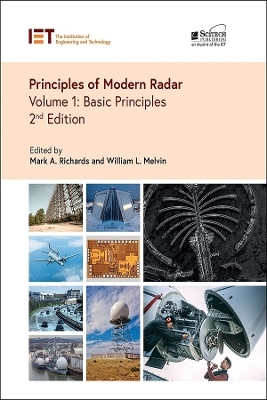
Principles of Modern Radar
Institution of Engineering and Technology (Verlag)
978-1-83953-381-5 (ISBN)
The second edition of Principles of Modern Radar Volume 1: Basic Principles is a comprehensive textbook for courses on radar systems and technology at the college senior and graduate student level. It is also a professional training and self-study textbook for engineers switching to a career in radar as well as a professional reference for current radar engineers. It is unique in its breadth of coverage, its emphasis on current methods and its careful balance of qualitative explanation and quantitative rigor appropriate to its intended audience.
The book focuses on four key areas:
Basic concepts such as the radar range equation and threshold detection.
Radar signal phenomenology, such as radar cross section models, clutter echo, atmospheric effects and Doppler effects.
Descriptions of all the major subsystems of modern radars such as the antenna, transmitter, and receiver, and including modern architectural elements such as exciters and advanced signal processors.
Signal and data processing techniques, from digital signal processing fundamentals to detection, Doppler processing, waveforms and pulse compression, basic imaging concepts and measurement and tracking fundamentals.
The popular first edition of Principles of Modern Radar has been completely updated to remain current with new developments in radar hardware technology, signal processing and applications, while maintaining its focus on timeless basic principles.
Mark A. Richards is a retired independent consultant and educator based in the USA. William L. Melvin is director of the Sensors and Electromagnetic Applications Laboratory at the Georgia Tech Research Institute, USA.
Chapter 1: Introduction and Radar Overview
Chapter 2: The Radar Range Equation
Chapter 3: Propagation Effects and Mechanisms
Chapter 4: Doppler Phenomenology and Measurement
Chapter 5: Characteristics of Clutter
Chapter 6: Target Reflectivity
Chapter 7: Target Fluctuation Models
Chapter 8: Digital Signal Processing Fundamentals for Radar
Chapter 9: Radar Apertures
Chapter 10: Radar Transmitters
Chapter 11: Radar Receivers
Chapter 12: Radar Exciters
Chapter 13: The Radar Signal Processor
Chapter 14: Threshold Detection of Radar Targets
Chapter 15: Constant False Alarm Rate Detectors
Chapter 16: Doppler Processing
Chapter 17: Radar Measurements
Chapter 18: Tracking with Radars
Chapter 19: Fundamentals of Pulse Compression Waveforms
Chapter 20: An Overview of Radar Imaging
Appendix A
Appendix B
| Erscheinungsdatum | 06.02.2023 |
|---|---|
| Reihe/Serie | Radar, Sonar and Navigation |
| Verlagsort | Stevenage |
| Sprache | englisch |
| Maße | 203 x 254 mm |
| Themenwelt | Technik ► Nachrichtentechnik |
| ISBN-10 | 1-83953-381-1 / 1839533811 |
| ISBN-13 | 978-1-83953-381-5 / 9781839533815 |
| Zustand | Neuware |
| Informationen gemäß Produktsicherheitsverordnung (GPSR) | |
| Haben Sie eine Frage zum Produkt? |
aus dem Bereich


